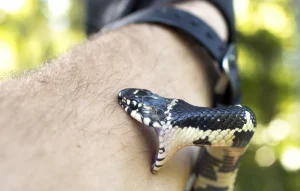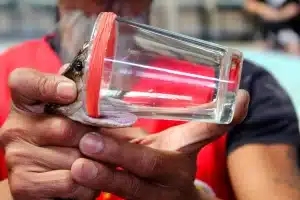Avoiding Snakebites in Thailand
A Guide to Avoiding Snakebites in Thailand and Southeast Asia
In the diverse landscapes of Thailand and other Southeast Asian countries, encountering snakes, including venomous species, is a possibility. This guide provides practical advice to minimize the risk of snakebites and ensure safe interactions with these often misunderstood creatures.

Introduction to Snakebite Prevention
The significance of preventing snakebites is paramount due to the serious health risks they pose. Annually, snakebites affect thousands globally, leading to critical health issues and fatalities. Education about snake behavior, habitat preferences, and understanding the difference between venomous and non-venomous species are vital in reducing snakebite incidents and fostering safer human-snake coexistence.
Understanding Snake Behavior and Habitat
Familiarize yourself with common snake species in your area. In Southeast Asia, including Thailand, venomous snakes like cobras, green pit vipers, Malayan Pit Vipers, and Kraits are primarily nocturnal but can also be active during the day.
Habitats of Venomous Snakes
Venomous snakes in this region typically inhabit the ground and trees. They are often found in environments such as grasslands, scrublands, savannas, and open forests but tend to avoid dense rainforests and arid areas.
Tips for Outdoor Safety
When venturing outdoors, especially in snake-prone areas, adopt these practices:
- Choose Safe Hiking and Camping Locations: Opt for areas with short grass or dirt paths, and stay on well-worn trails to avoid tall grass.
- Proper Clothing: Wear protective footwear that encloses the feet, especially when walking at night, and consider long pants to shield your legs.
- Be Vigilant Near Water and Rocks: Snakes may rest in these areas.
- Use a Flashlight at Night: Always walk with a good flashlight in dimly lit areas.
- Snake-Proofing Your Property: Remove potential snake attractants like rodents and secure gaps in fences and walls.
Encountering Snakes: Best Practices
Maintain a safe distance from snakes, at least 5 meters or more. React calmly, avoiding sudden movements or attempts to interact with the snake. Educate children on maintaining distance and identifying venomous snakes.
Understanding Snake Behavior
Be aware of snakes’ defensive behaviors. Cobras, for instance, might display a hood, but a bite can occur even without this warning. Most snakes coil before striking, and it’s essential to know the behaviors of local species.
Snakebite First Aid and Preparedness
In the event of a snakebite, immediate action is crucial:
- Remain Calm and Immobilize the Affected Area: Avoid panicking and keep the bitten limb still.
- Seek Medical Attention Promptly: Always get to a healthcare facility as quickly as possible for proper treatment.
- Avoid Common Misconceptions: Do not cut the bite or try to suck out the venom.
- Snakebite Preparedness Kit: Carry a kit with essential first aid supplies, especially during high-risk activities like hiking, camping, and gardening.
Encouraging Snake Conservation
Understand the ecological role of snakes and promote their conservation. Respecting snake habitats and encouraging coexistence are key to protecting these important creatures.
Summary
To avoid snakebites in Thailand and Southeast Asia, stay informed about local snake species and their behaviors, take preventive measures when outdoors, and be prepared with first aid knowledge and supplies. Respect and protect snakes to maintain ecological balance.
Remember, always explore or hike with a friend and carry a phone for emergencies, and wear appropriate clothing and carry necessary items to reduce the risk of snake encounters. By following these guidelines, you can safely enjoy the natural beauty of these regions while coexisting with their native wildlife.

